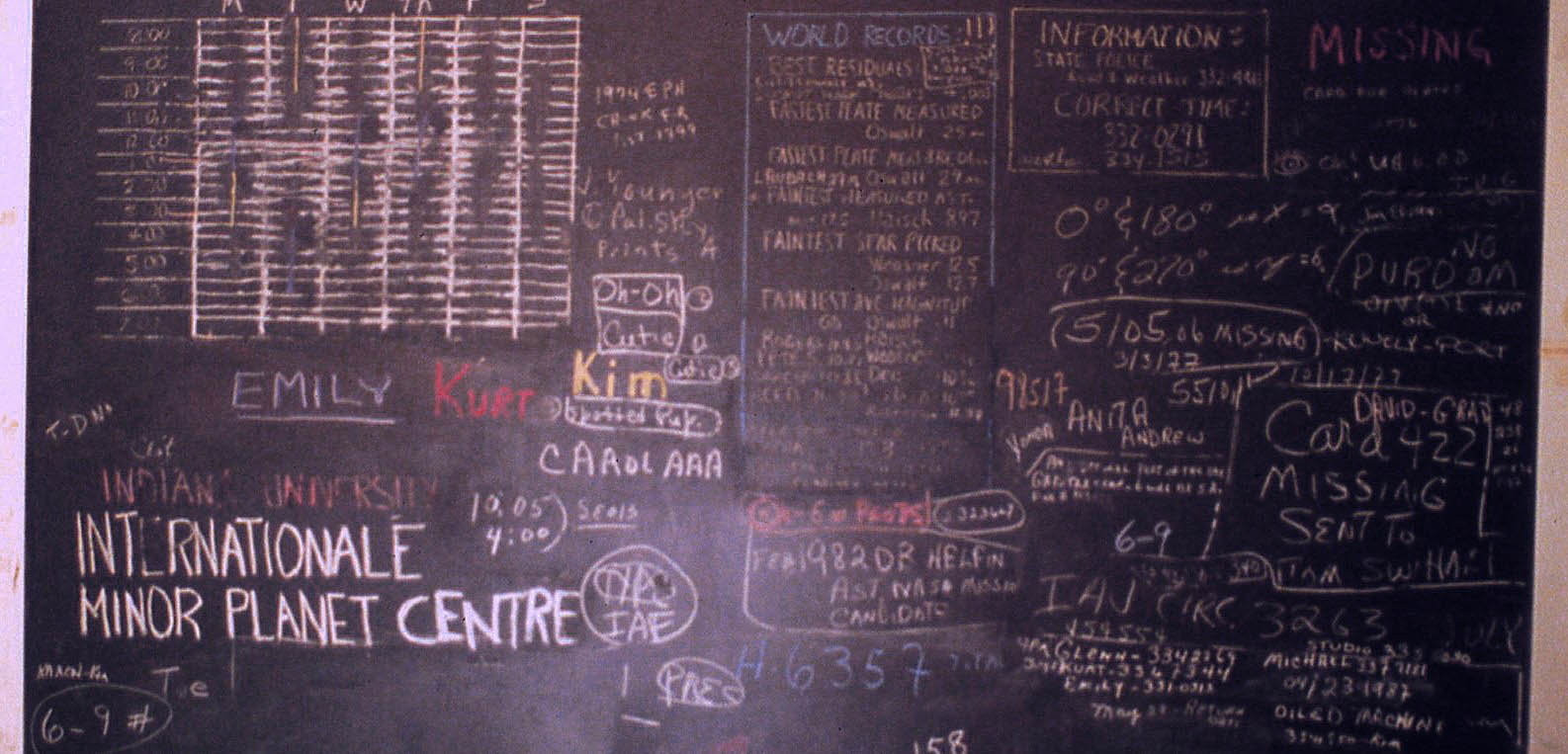IU Asteroid Program
Many asteroids were “lost” during World War II due to the worldwide interruption of regular astronomical observations. To fill this need, Professor Frank K. Edmondson, in collaboration with the Cincinnati Observatory, initiated a program to recover the lost asteroids. Professor James Cuffey arranged for the Department to borrow a 10-inch, f/6.5 Cooke triplet astrographic camera from the Cincinnati Observatory, which, at that time, housed the Minor Planet Center of the International Astronomical Union.
The blackboard used to track the asteroid program back in the 80’s

The astrograph was installed on the grounds of the Link Observatory in Brooklyn, Indiana. Observations began in 1949 and continued until 1966, when the sky became too bright from the growth of Indianapolis to detect faint asteroids. By then more than 6300 plates had been taken. The plate collection served as a valuable archival resource of asteroid positions until 1987, when it was transferred to the Lowell Observatory. These observations led the recovery of the lost asteroids, but also the discovery of many new minor planets. The astrograph’s 10-inch lens has since been returned to the Cincinnati Observatory.
Many of our graduate and undergraduate students participated in the Asteroid Program over the years, contributing to recovering the lost asteroids, making new orbital calculations or revising old ones, deriving magnitudes accurate to about 0.1 mag, and discovering 119 new asteroids. All of the asteroids were named by Professor Edmondson to honor important sites, programs, and people who contributed to astronomy, including Indiana University administrators, faculty, and friends. Edmondson, a lover of classical music named asteroid 1799 Koussevitzky in honor of his favorite conductor.
A list of the Indiana Asteroids is available here.
 The College of Arts
The College of Arts